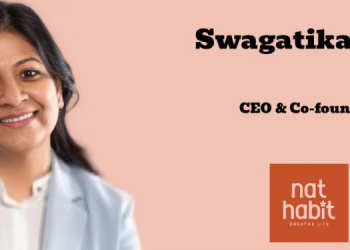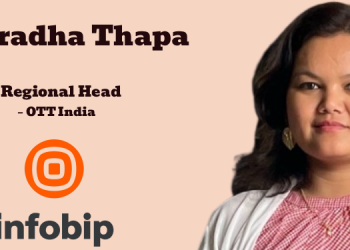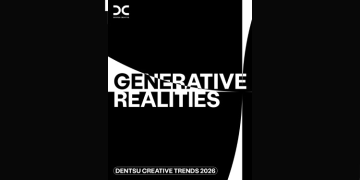Advertising has always been a delicate balance between persuasion and strategy. In India, where consumers have an innate knack for questioning and scrutinizing every purchase, this balancing act becomes even more complex. Whether it’s the neighborhood aunty debating the authenticity of organic ghee or the digitally savvy millennial dissecting a brand’s social impact statement, Indian consumers have always been discerning. What has changed is the scale and precision with which this discernment can now be influenced, curated, and even commodified.
We now live in an era where ethics in advertising intersects with data-backed narratives. An era where the boundaries between genuine consciousness and performative responsibility blur at an unprecedented pace.
Consider Aramco, the world’s largest energy company. Despite its roots in the fossil fuel industry, it has repositioned itself as an advocate for sustainability, heavily investing in green energy campaigns. Its advertisements, brimming with imagery of renewable energy and carbon neutrality, speak of a clean future. Yet, at its core, Aramco’s primary business continues to revolve around oil production. Is this an indicator of genuine corporate responsibility or a carefully constructed effort to align with the conscious consumer trend?
Then, there’s Philip Morris International, a leading tobacco company whose campaigns advocate for a “smoke-free world.” It promotes reduced-risk products such as IQOS as part of a broader pivot towards public health. On the surface, it seems commendable… until one considers that the company still relies heavily on traditional tobacco sales to drive profits. This paradox—addressing the problem while remaining the problem—defines the modern complexities of corporate responsibility.
These examples illustrate the evolving nature of ethical advertising. On one hand, corporations are acknowledging the expectations of a more socially conscious consumer base. On the other, the inherent contradictions in their business models highlight the challenge of reconciling purpose-driven messaging with profit-driven motives.
The idea of the “conscious consumer” is often framed as a modern phenomenon. Yet, it is anything but new. Our ancestors were conscious consumers long before it became a trend. They knew which vendors to trust, how to ensure quality, and where to find value. What distinguishes today’s consumer is the amplification of their voice and influence. A single comment, tweet, or post can spark widespread discourse, shaping public perception and pressuring brands to adapt—or at least appear to.
Data has transformed this intuitive awareness into a measurable and exploitable asset. Consumer grievances can be converted into actionable insights. Emerging preferences can be elevated into societal movements. The rise of clean beauty, veganism, and eco-conscious fashion are not just reflections of evolving values; they are products of data-fueled marketing strategies that identify and amplify trends for commercial gain.
But this raises a critical question. If consumer consciousness is increasingly curated by algorithms and targeted campaigns, is it truly organic? Are today’s consumers making independent choices, or are they responding to narratives carefully constructed by brands seeking to align with their values?
In an environment where every advertisement exists under the dual lens of approval and skepticism, brands operate within a half-empty, half-full reality. Social platforms and gadgets—once tools of communication—have become battlegrounds where brands must defend their authenticity while vying for relevance.
A single campaign can evoke polarizing responses. Dove’s “Real Beauty” campaign, for instance, received applause for celebrating diversity but was simultaneously criticized for commodifying body positivity. In India, brands must navigate even more nuanced terrains. Veganism, for example, resonates as a progressive trend in urban centers but clashes with deeply rooted cultural and dietary traditions in rural and semi-urban areas.
The tension between aspirational storytelling and cultural authenticity often exposes the fragility of ethical advertising. Many brands engage in what can only be described as performative ethics. Fast fashion brands introduce token sustainable lines while continuing practices that harm the environment. Corporations tout their inclusivity while their boardrooms remain glaringly homogenous.
Ethics, in such cases, becomes less about doing the right thing and more about managing public perception. Theatrics replace accountability.
Yet, as a strategist, I’ve observed that the most effective approach lies in embracing imperfection. Honesty… admitting where a brand falls short and committing to actionable change… fosters trust in ways that no polished campaign can. A fashion brand acknowledging its reliance on unsustainable materials but sharing its roadmap to improve, or a delivery platform transparently addressing its carbon footprint while introducing eco-friendly initiatives, can build loyalty rooted in authenticity.
However, we must also confront the cyclical nature of consumer trends. Today’s conscious consumer may boycott a product for its environmental impact, only to prioritize convenience over principle tomorrow. The very market forces that demand ethics can often make them secondary to price, accessibility, or utility.
This brings us to a sobering conclusion. The ethics of advertising, while noble in theory, often exist as a response to the pressures of survival in a competitive market. Brands strive to keep pace, consumers oscillate between values and convenience, and narratives continue to evolve.
Ultimately, the essence of ethical advertising isn’t about achieving perfection. It’s about acknowledging the imperfections… confronting them head-on… and maintaining accountability in a world where transparency is no longer optional.
(Views are personal)

















